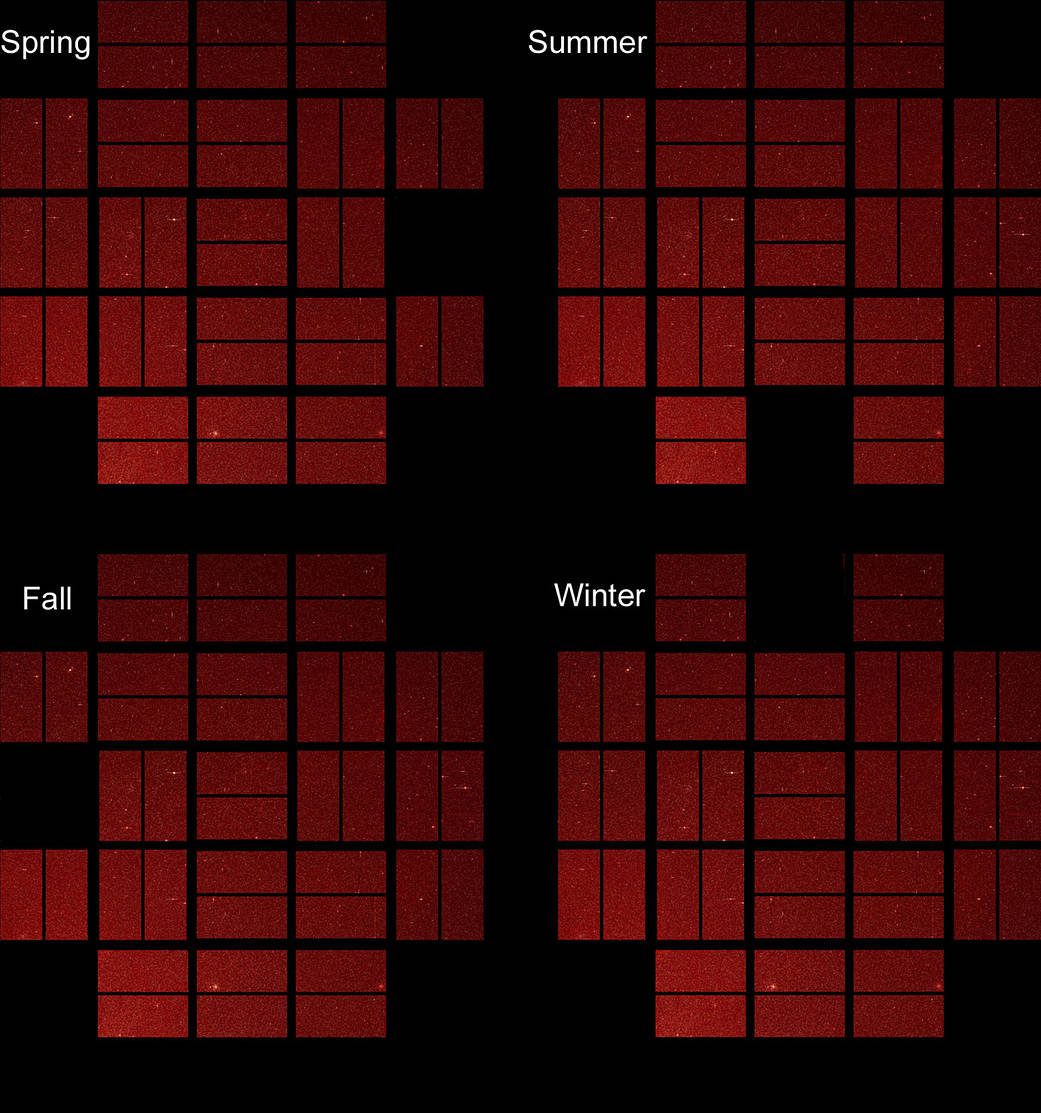Module 3, on the edge of our field of view stopped working on Jan. 9, 2010. Since then it’s been dark, with no star images. The Kepler focal plane is approximately one foot square. It’s composed of 25 individually mounted modules. The four corner modules are used for fine guiding and the other 21 modules are used for science observing.
Under normal operations, each module and its electronics convert light into digital numbers. For the darkest parts of the image between stars, we expect these numbers to be very small (but not zero). Correspondingly, for the brightest stars in the image, much larger numbers are expected creating an image of each observed star and its background neighborhood. The numbers we see coming out of failed module 3 are all very similar in size and considerably lower than the normal levels. These numbers produce an image that looks like the “snow” on a television that has very bad reception. There are no stars visible in these images.
The design of the Kepler detectors contains several redundant features to prevent the failure of a module, but the space environment is unforgiving and failures do occur. The fact that this anomaly affects all four channels on one module will help determine the probable cause. Module 3 is on the periphery of the field of view.
Since the Kepler spacecraft rotates by 90 degrees every three months, module 3 would normally observe a different portion of the Kepler field of view each season, as shown in this image. Hence, no part of the Kepler field of view has been rendered unobservable it’s just that four regions are only observable three out of four seasons, or 75 percent of the time, if the module is unrecoverable. We specifically designed Kepler to preclude the propagation of failures such as this. The design is highly compartmentalized so that a failure in one area will not spread to another. There will be minor changes to the signals from the remaining science modules because the focal plane and its electronics have changed temperature somewhat since the bad module isn’t drawing as much current anymore, but the current problem is not expected to spread beyond the one affected module.
Credit: NASA/Kepler mission




























